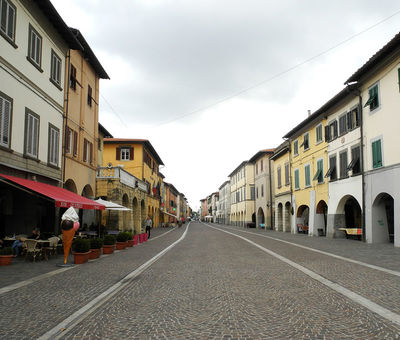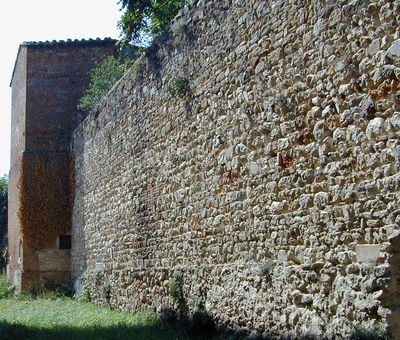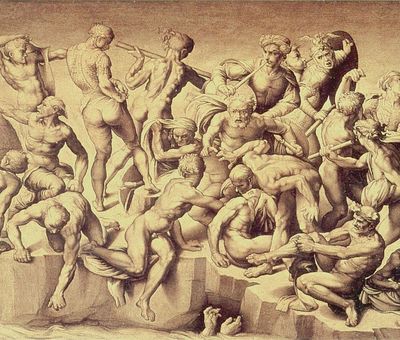Symmetry above all
Defending itself against invasions, especially from Florence, was always Cascina's top priority. Documents confirm that around the year 1000 AD the town started to forge a closer relationship with Pisa, both from an economic and a strategic point of view, becoming a fortified outpost on the road to Florence.
The town plan consists of fourteen rectangles, arranged in two rows. Their dimensions are nothing if not precise: the rectangles on the south side measure 37.50 x 106 metres, while those in the north row measure 37.50 x 120 metres. The first mention of a circuit of walls dates back to 1269. Thanks to archived documents, we know that in 1142 the town, probably already subdivided into military zones, erected a castle and a guardtower.
A stronghold can always be stronger
Cascina's earliest fortifications were not enough to save it from ruin. In 1292 Florentine forces razed it to the ground, leaving only the parish church and part of the old medieval tower standing. Soon afterwards, it was decided that the defences must be strengthened: the towers were bolstered, a weapons ground was opened and a citadel was built, using the military technology of the time. The building work began in the part of the town closest to the city on which it depended, namely Pisa: from that moment forth, Cascina assumed the urban layout that would remain more or less unaltered from then on. The fortification drive was given another shot in the arm by the Battle of Cascina in 1364, which once again resulted in a resounding victory for Florence. The walls were raised to the current height, the citadel was reinforced and the towers were restructured, taking on the forms in which we see them today. Two gates were built: the Porta Fiorentina to the east and the Porta Pisana to the west.
Michelangelo's sketch
The gonfalonier of Florence ordered Michelangelo to decorate the great hall in the Palazzo Vecchio with the scenes of heroism and military might that had made Florence the power that it was. Michelangelo was entrusted with a subject dear to Florentine hearts, the Battle of Cascina of 1364, which saw the defeat of the Pisans after, so chronicles report, they had been ambushed when swimming in the Arno, cooling off in the broiling weather. Michelangelo had the commission more or less completed in the early 1500s, but did not apply the finishing touches, as he was called to Rome. He has laid down a sketch, however, and, with that, he left Florence. What everyone acclaimed as a masterpiece was destroyed, but copies had fortunately been made, of which the most accurate and faithful is that by Aristotile da Sangallo.







